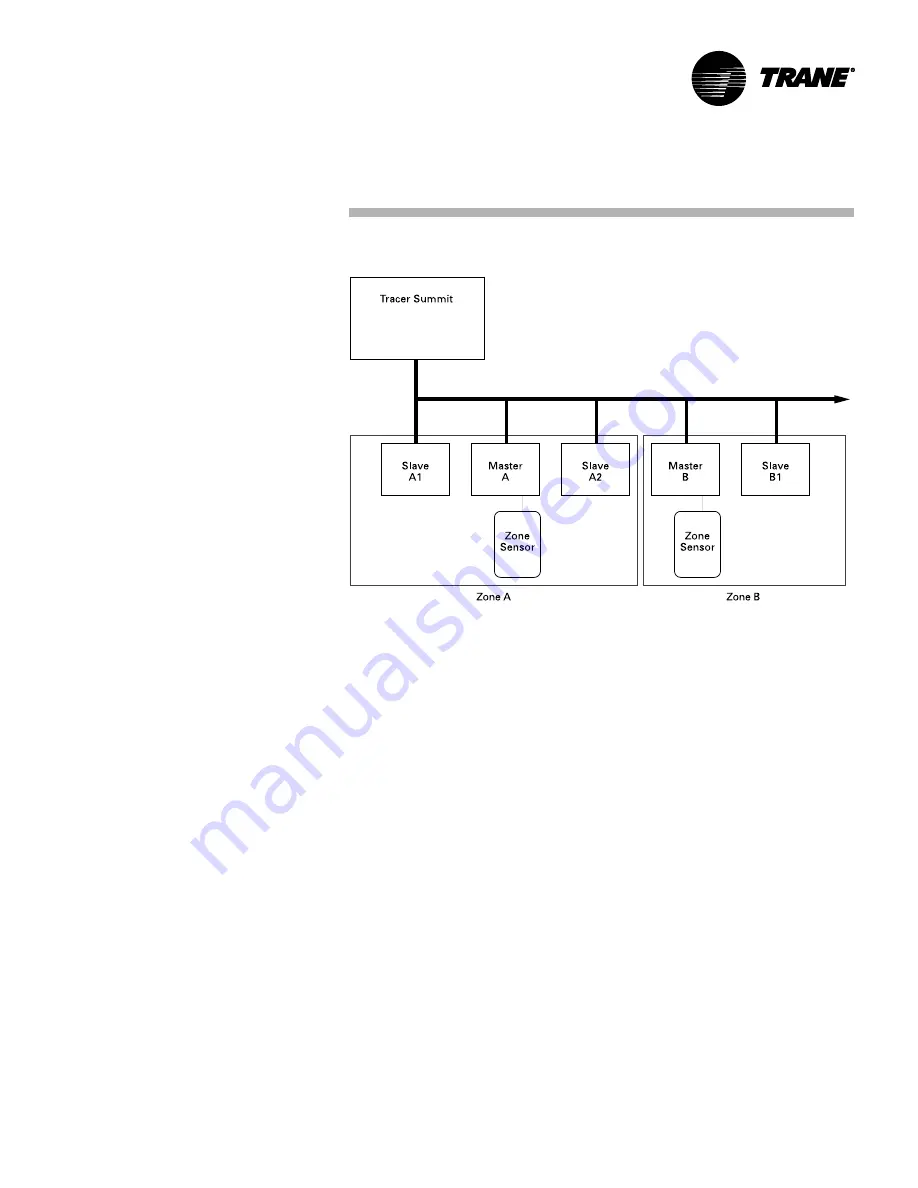
Application information
CNT-SVX04A-EN
85
Figure 7More complex data sharing application
Occupied/Unoccupied
You can configure the controller’s binary input 3 (BI 3) as an occupancy input.
As an occupancy input, the stand-alone controller uses binary input 3 to switch
between occupied and unoccupied. When BI 3 is configured as a normally open
occupancy input, the stand-alone controller switches to occupied mode when
BI 3 contacts are open.
The master controller (the zone controller with the hardwired occupancy input)
in peer-to-peer communication can send its occupancy mode to one or more
slave controllers (so they all track each other's occupancy mode). For these
applications, you must use Rover service tool to set up the controller. Refer to
the Rover service tool product literature for more information.
Timed override
Peer-to-peer timed override requires at least two controllers. The first controller,
commonly referred to as the master, passes occupancy information to other
controllers, commonly referred to as slaves.
The master controller’s space temperature analog input generates timed
override on and cancel requests in the following manner. The master controller
interprets a momentary short (0.2–5 seconds) by the space temperature input
as a timed override On request. During unoccupied mode, the On request
places the master controller in occupied bypass mode until the occupied timer
expires or until someone presses the zone sensor’s Cancel button.
















































